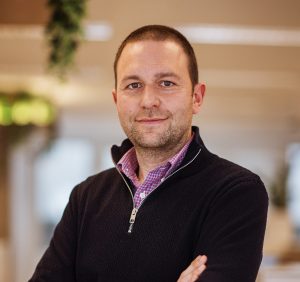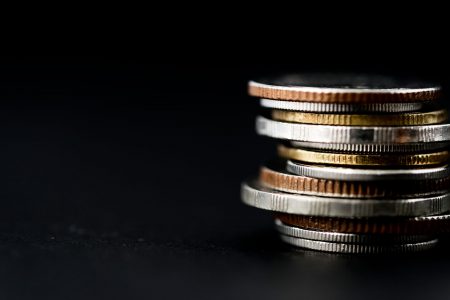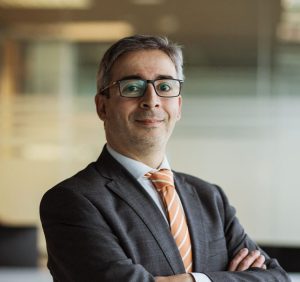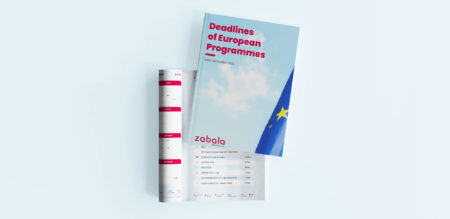
Opinion
Data
Europe’s commitment to the data economy

Julen Ugalde
Head of European Projects at the Bilbao office
BIOECONOMY
The European commitment to Bioeconomy is included in different funding instruments and programmes that support R&D, including the call Bio-Based Industries JU (BBI), which will close on the 4th of September 2019

We live in a world with limited natural resources and whose population will double in the coming decades. In recent times, a series of challenges have arisen that make us rethink the productive models based on the exploitation of these resources. It is in this context, where Bioeconomics is proposed as the alternative of the future, improving and innovating the way in which food, products, materials and energy are produced.
Among the undeniable effects of climate change and the overexploitation of natural resources, there is only one positive aspect: We have finally developed an environmental conscience that alerts us to issues such as the degradation of soils and ecosystems, the paradox of an increase in the global population while facing rural depopulation, the ageing of the so-called “first world” and the search for an energy model that does not depend on fossil fuels.
The UN, within its 2030 strategy which includes the Sustainable Development Goals (SDGs), indicate that “we need fundamental changes in the way our societies produce and consume goods and services” in order to respect the ecological limits of our planet.
Broadly speaking, bioeconomics could be defined as the set of technology -and knowledge-intensive economic activities that generate high value-added products and services, such as ingredients for human or animal sustenance, bioplastics or bioenergy, all using biological resources as raw materials.
Bioeconomics proposes a new production model based on the optimization of energy sources and resources, prioritizing those of a renewable nature. Its objective, in short, is to guarantee, through the responsible use of the planet’s biological material, food security, biodiversity, the safeguarding of natural resources and the protection of the environment, with a strong link with the local resources of each territory, taking advantage of their waste and boosting the circular economy.
The bioeconomy covers all sectors based on biological resources (animals, plants, microorganisms and the biomass derived from them, including organic waste). This includes terrestrial and marine ecosystems and the services they provide, all primary production sectors that use and produce biological resources (agriculture, livestock, forest management, fisheries and aquaculture), as well as industries that use biological resources for food production, bio-based products, energy and other services.
Seeking to position itself as a leader for a post-oil and carbon-neutral society, the European Union pioneered the launch in 2012 of a strategy for a sustainable bioeconomy, which has been updated in 2018. Following the European model, most European countries, as well as numerous other countries in the rest of the world, have been launching their own strategies in bioeconomics. At the same time, regional initiatives are being implemented to promote activities related to sustainable bioeconomy in each territory.
These strategies aim to better connect producers and processors of different biomass sources, trying to reconcile concepts such as food security, scarcity of natural resources and environmental objectives with the use of biomass for industrial and energy uses.
Sustainability and circularity
To be successful, bioeconomics must prioritise the concepts of sustainability and circularity. This is what will guide the renewal of our industries, the modernization of primary production systems and the protection of the environment while maintaining biodiversity. With all of the above, the bioeconomy must opt for models of economic activity that are sustainable in the long term, and that are in tune with the environment and the ecosystem in which they are located and closely linked to the local resources of each community.
Although bioeconomics is considered a concept for the future, today it already generates an income of 2.3 trillion € in the EU and accounts for 8.2% of total employment, being a key sector in the European economy. The development of sustainable bioeconomy will help to consolidate this position by creating new jobs, especially in rural and coastal areas, and new lines of business, increasing the participation of producers in local bioeconomies. In addition, the rapid growth of the biotechnology sector will play a key role in achieving this, with quality jobs and high qualifications.
If it is clear that R&D is a necessity for any productive sector, it is even more so for a sector of the future, in which its limits have yet to be discovered and where obstacles are continually being broken down and an immense range of possibilities is being opened up thanks to a very dynamic innovation ecosystem. New connections are continuously being established between previously watertight sectors, seeking new applications for raw materials that were previously discarded and creating a social impact beyond the sale of new products and/or services. For the evolution of this new sector, the involvement of civil society and the local and regional administrations is key, so that each new step that is taken in the development of this new economy, takes into consideration their position.
At this point, Europe’s commitment to Bioeconomics is non-reversable and for this reason it is included in different funding instruments and programmes that support R&D. Notably, the Bio-Based Industries JU (BBI), whose next call closes on 4 September as well as ther calls such as PRIMA, Rural Renaissance and Food and Natural Resources within the Social Challenge 2 of H2020, expected to be launched at the beginning of 2020. In addition there will be different national and regional strategies to promote this new model. Bioeconomy principles will lay at the heart of projects financed by “Horizon Europe”- the next EU Framework Programme for Research and Innovation for 2021-2027, and will also shape the future Common Agricultural Policy.
At ZABALA Innovation Consulting, we support the Bioeconomy sector to exploit their R&D results and facilitate their transfer to the market for the creation of new products and services. We have participated in relevant projects such as PROBIO, through which we have offered coaching and assistance to companies and entrepreneurs to favor and accelerate the commercialization of their R&D results . In addition, we provide information and knowledge channels to reach higher levels of technological maturity and transfer the results to the agents responsible for the design of policies and strategies.
Another of our most recent projects in this field is RUBIZMO, which aims to stimulate investment in various rural economic sectors, with a special focus on the valorisation of rural assets and the exploitation of under-utilised resources. The project identifies and promotes business opportunities to diversify economic activities in rural areas that can generate added value, job creation and a more sustainable use of resources. RUBIZMO brings together 16 leading organisations from 11 countries, achieving a balance between East-West and North-South Europe, focusing on European countries with large rural populations. The project has been funded under H2020 and will end in April 2021.
How does Bioeconomics influence your future strategy? To achieve the Bioeconomy goals set for the future, all actors have a responsibility and an opportunity for improvement: governments, civil society and business. Whatever field you are in, at ZABALA Innovation we can help you to promote your Bioeconomy strategy or your innovative project. Shall we talk?

Opinion
Data

Julen Ugalde
Head of European Projects at the Bilbao office

Opinion
EUROPEAN BUDGET

Ana Lumbreras
Dissemination and Communication in European Projects

Opinion
CULTURE

Leire Martiarena
Social Innovation Knowledge Area Leader

News
sCO2flex

Opinion
BIG DATA

Juan Cristóbal García
Senior Innovation Strategy Consultant

Publication
EUROPEAN PROGRAMMES
We have gathered the most relevant European Programmes calls for proposals in a calendar, available for download!
The important thing is not to keep moving, but rather to know in which direction to go. Our 37% success rate proves that we know how to guide our clients.
This website uses cookies so that we can provide you with the best user experience possible. Cookie information is stored in your browser and performs functions such as recognising you when you return to our website and helping our team to understand which sections of the website you find most interesting and useful.
Strictly Necessary Cookie should be enabled at all times so that we can save your preferences for cookie settings.
This website uses Google Analytics to collect anonymous information such as the number of visitors to the site, and the most popular pages.
Keeping this cookie enabled helps us to improve our website.
Please enable Strictly Necessary Cookies first so that we can save your preferences!
This website uses the following additional cookies:
(List the cookies that you are using on the website here.)
Please enable Strictly Necessary Cookies first so that we can save your preferences!